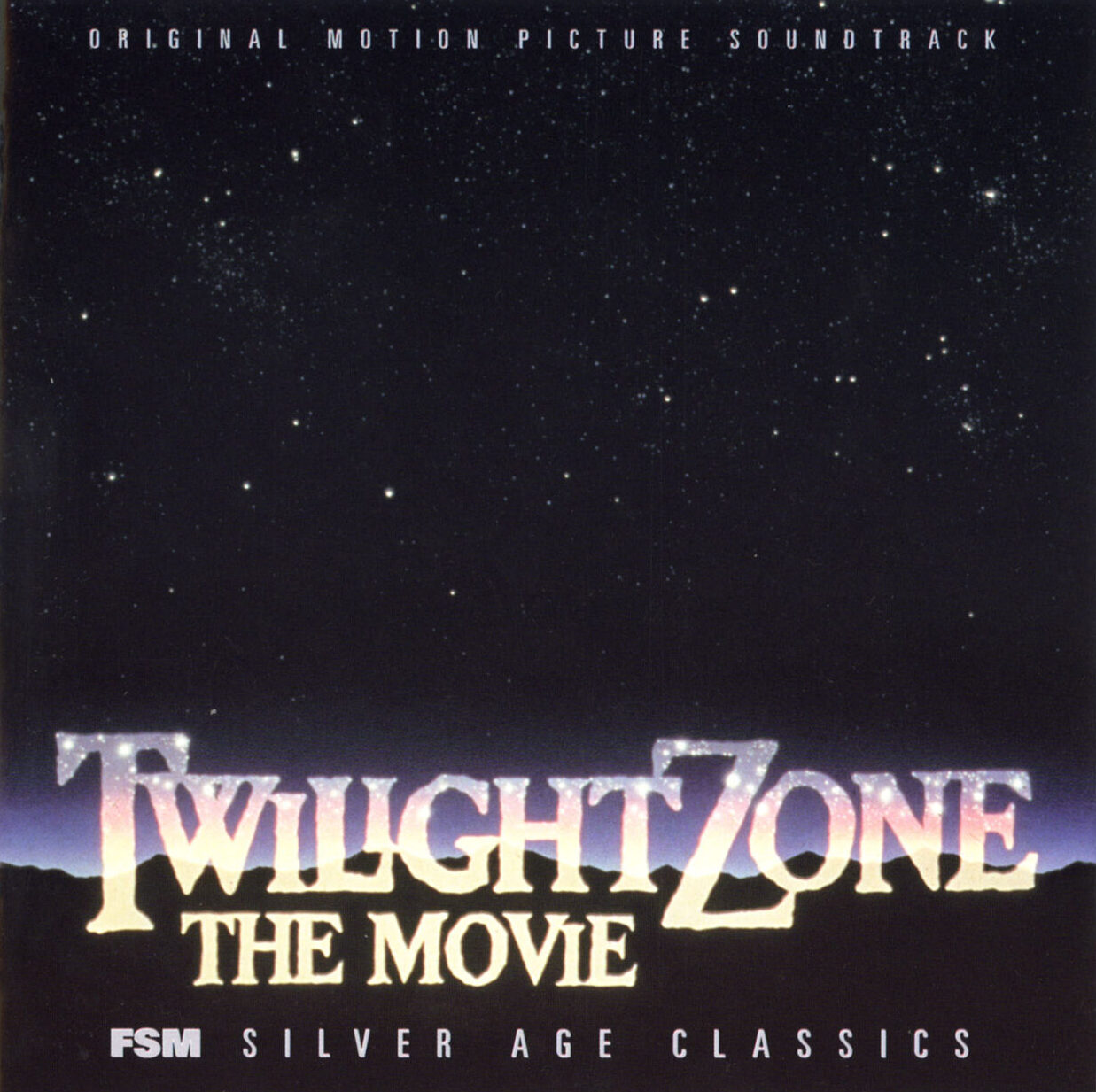Returning full-circle to the early days of his career as a contract composer working for one studio or another, Jerry Goldsmith was no stranger to The Twilight Zone, having devised the music for some of its classic television installments. By the time he was tapped for the big-screen re-interpretation of it, however, Goldsmith was one of the major players in movie music…and in 1983, just a few years after Aliens and Star Trek: The Motion Picture and their knockout scores, that’s putting it mildly. According to the information-dense booklet that’s become a hallmark of Film Score Monthly’s impressive CDs, Goldsmith was more than happy to return to this particular dimension of sight and sound. This CD gathers, for the first time, every note of music recorded for Twilight Zone: The Movie, including background source music and even leaving room for the suites that were specially recorded or edited together for the original 1983 album release (in the back of the booklet, a running order is included for those who wish to program their CD players to reflect the original LP running order).
If there’s a composer better suited to this unusual movie – which did its best to reflect its short-story-length episodic roots – I can’t imagine who it would be. Goldsmith is called upon to deliver, effectively, four distinctly different scores for one film, as well as framing sequences bookended by Marius Constant’s immortal Twilight Zone theme. What’s all the more impressive is that Goldsmith doesn’t seem to have changed a thing about the original theme, completely forgoing the opportunity to update it or broaden it for the big screen. This is one of the elements that really works toward making the film an integral chapter of the franchise: whether you’re talking about the music or the scripts, it doesn’t completely betray the source material just to cash in on the name (which it very easily could have – the movie languished in development hell for some time as its structure was endlessly debated at the studio).
The first story in the movie’s four-episode format, Time Out, receives a deceptively old-fashioned score: heavy on rumbling piano bass notes and an occasional snare drum cadence, it’s nothing that couldn’t have been done with the meager musical resources at Goldsmith’s command in the original TV series. Kick The Can, the second story, has a broader musical palette, but it accomplishes this by way of synths which were, even then, obviously synths.
The third story, It’s A Good Life, receives an unusual musical treatment to say the least – there are moments of beauty and wonder that sound like they might’ve emerged from the Star Trek: The Motion Picture score, and then there are Carl Stalling-inspired slices of cartoon whimsy that inevitably descend into something with a much more sinister feel. Jarring, but effective; “The House” is one of my favorite pieces of Goldsmith music from this epoch of his career.
The fourth and final story, Nightmare At 20,000 Feet, is the crowning glory of Twilight Zone: The Movie, revisiting a segment of the original series that starred William Shatner. In the big-screen iteration, however, John Lithgow is the increasingly paranoid passenger who rants and raves that he’s seen “a man on the wing of the plane!” Nightmare is one of my favorite pieces of early ’80s genre cinema, and it gets a devilishly devious musical treatment with plenty of scratchy fiddle and wavering, almost-theremin-like synthesizer to signify the gremlin that’s tearing the plane apart before Lithgow’s eyes. And speaking of gremlins, in between the big, brassy suspense cues, the creature also gets a musical signature that one can tell was rhythmically built upon by Goldsmith for Gremlins a year later – though not madly similar melodically, the rhythmic resemblance is undeniable. In Gremlins, the same rhythm gained a playful-but-sinister tone, but here, it’s just plain scary.
The bonus tracks include the edited-down suites from the original LP, previously unreleased songs recorded for the backgrounds of certain scenes (which, while seemingly out of place next to the orchestral score, were still written by Goldsmith), and a few alternate takes. It was mentioned at the beginning of this review, but the booklet is an outstanding source of behind-the-scenes info about both the movie and its music, including the original LP liner notes. Twilight Zone: The Movie was a major release from a major studio, and Film Score Monthly’s presentation more than does it justice.

- Main Title: The Twilight Zone Theme (0:48)
Time Out
- Questions / The Ledge (4:03)
- Yellow Star (3:57)
Kick The Can
- Harp and Love (1:27)
- Weekend Visit (1:34)
- Kick The Can (0:37)
- Night Games (1:54)
- Take Me With You / A New Guest (10:13)
It’s A Good Life
- The House (2:30)
- The Sister / I Didn’t Do It (1:22)
- Carbon Monster (3:08)
- That’s All, Ethel (1:48)
- No More Tricks (3:57)
Nightmare At 20,000 Feet
- Nervous Pills (2:39)
- No Smoking (2:07)
- On The Wing (1:21)
- A Face In The Window (2:11)
- Engine Failure (1:38)
- Overture: Twilight Zone Theme and End Title (6:03)
Bonus Tracks
- Nights Are Forever (3:36)
- Anesthesia (3:04)
- Questions / The Ledge (album edit) (3:03)
- Take Me With You / A New Guest (album edit) (5:03)
- That’s All Ethel (album edit) (4:29)
- Cartoon Music (1:27)
- A Face In The Window / Hungry Monster / Twilight Zone Theme (album edit) (4:58)
Released by: Film Score Monthly
Release date: 2009
Total running time: 78:57




